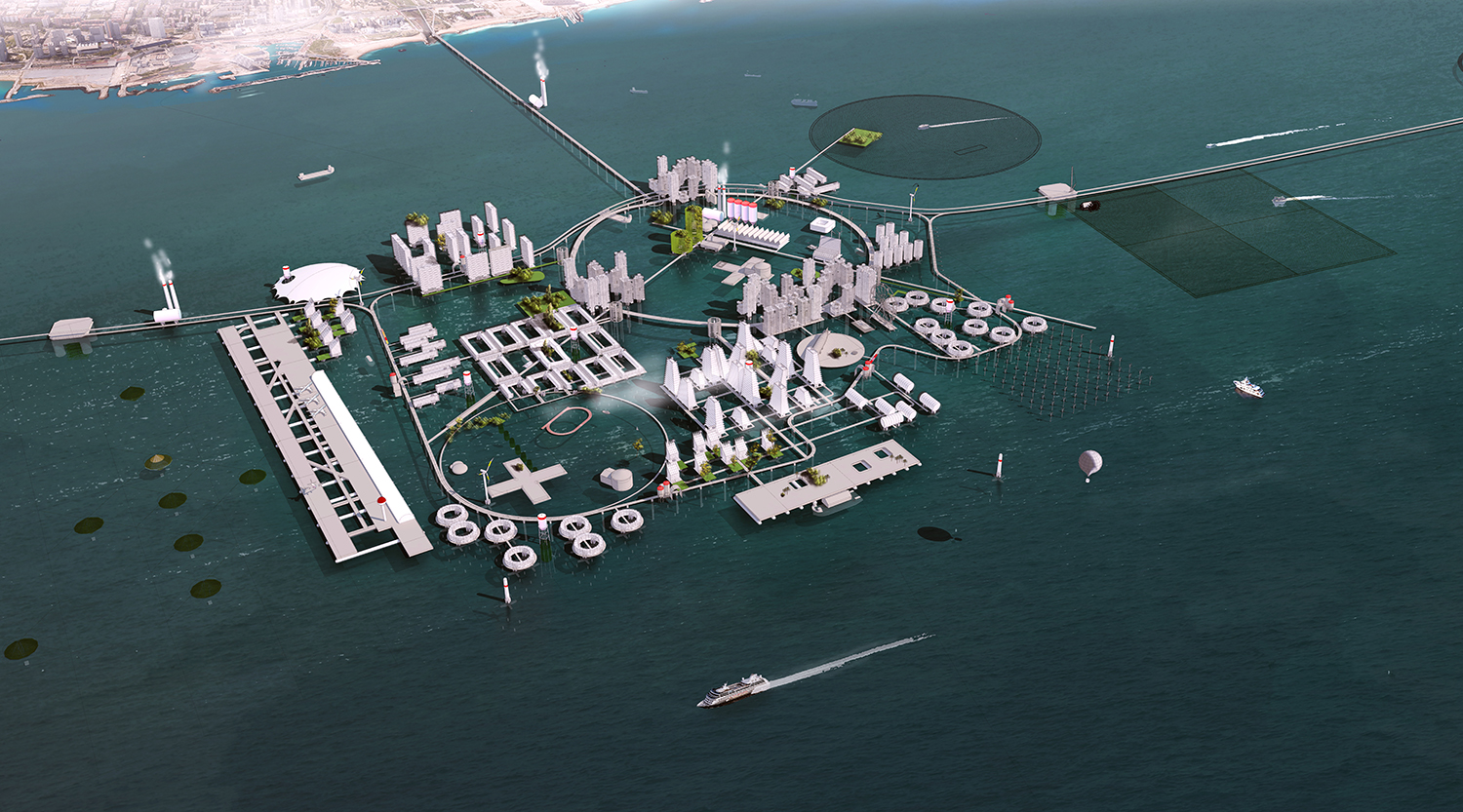︎︎︎
Mediterranean Metropolis
Mediterranean reclamation system
Mediterranean sea
Some of the most demanded coastal cities are running out of
space, something that emphasizes with the commonly mountainous topography that
surrounds them. Around the Mediterranean Sea, cities such as Monaco, Barcelona,
or Athens are representative of this problem, and on some occasions, the
current condition of the available land makes impossible the vertical or
horizontal expansion. In the metropolitan area of Barcelona, protected natural
reservoirs accentuate the issue of space, making necessary to think on
alternative built environment to host the always increasing population. If the
conditions of the Plan Cerdá wants to be preserved, what options left do we
have for the city to grow? In this sense, there is an opportunity to envision a
built environment over the blank space left in the sea. If most of the Mediterranean cities present a
similar condition than Barcelona, can we propose a built environment that is
capable of absorbing the rural migration to the coastal cities of the
Mediterranean Sea? Is the current model for land reclamation appropriate for
the Mediterranean bathymetry and its culture?
The challenges of (re)claiming land to the sea bring multiple
engineering challenges, being it is most important to be able to build a solid
base to construct settlements at its top. The examples of land reclamation seen
in other cities, such as Dubai, Bahrain, Osaka or Tokyo, makes of land filling
the easiest strategy to use in these type of geographies. This is due to the
shallow waters where they are constructed. However, the Mediterranean Sea
presents other characteristics. While in some places such as the Tunisia Coast
or the Adriatic Sea show shallow waters, the rest of the coast has a steep
geography where nearby the coast, the seabed, is too deep to use land filling
as a technique.
The following project will introduce an alternative technique
to land filling that –using over 40 times less material volume– enables the
possibility of constructing (re)claimed land in more places around the globe.
This is thanks to technological advances used in the offshore oil industry. The
case of Barcelona represents an excellent example of how is possible to
construct on the Mediterranean Sea while preserving the lifestyle that we
understand in the mainland. The possibilities that a partly-floating structure
presents to us are infinite, being one of its most significant value the water
column left beneath for the appliance of aquaculture techniques, converting the
available volume of water in an infrastructure for resource extraction.
team: Gabriel Muñoz Moreno
location: Mediterranean
client: LAIA Lab
year: 2016
program: masterplan / ecology







